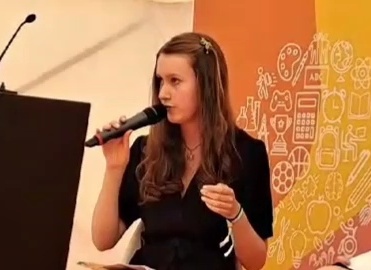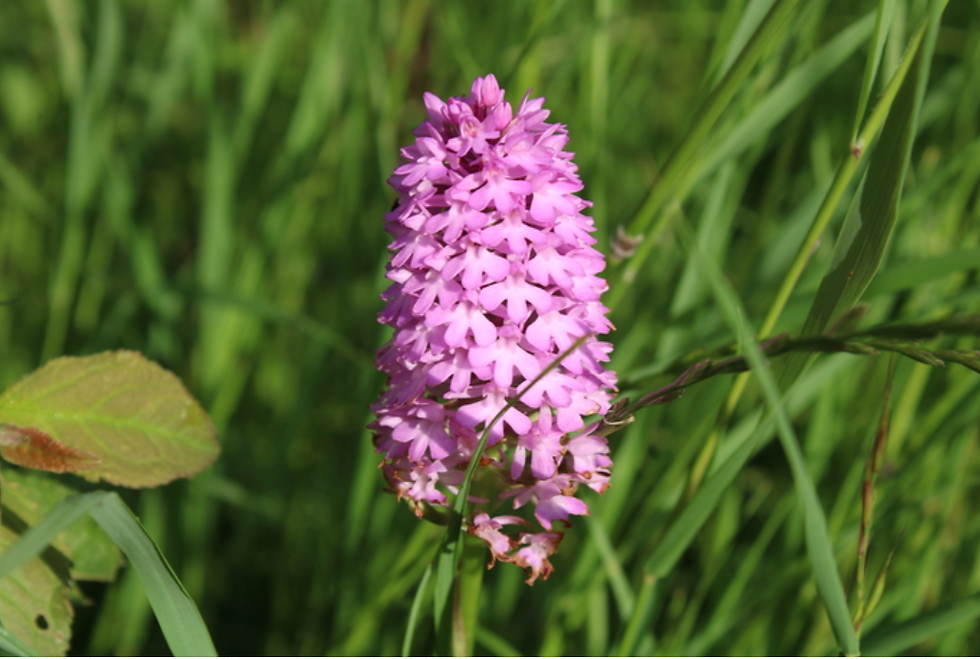Plastic Fields Forever
- Emily Hunt
- Mar 11, 2024
- 3 min read
I wrote this blog in 2021.
This is the plastic I picked up during a ten-minute walk along the edge of a ploughed field:
Shocking isn't it?
It's not unusual to find discarded agricultural products in hedgerows, ditches and streams. But this is different. This is plastic delivered from recycling centres, mixed in with decomposed organic waste, ready to be spread across our fields as a soil improver.
Our councils have targets to produce a certain amount of compost per year. This compost is made from the contents of our green/brown bins and is passed on to farmers as organic fertilizer for their fields. This sounds like a perfect, environmentally friendly method. However, around here at least, there seems to be a catch.
The mounds of mulch which are arriving do not only contain decomposed green matter, but lots of plastic trash. Once out in the countryside this enters ecosystems, leaching toxins and microplastics into the soil, which can then be absorbed by roots. It also pollutes waterways, eventually ending up in the sea.
I’ve inspected the contents of my bag, identified three categories of plastics and researched where they have come from...
Quite an obvious one is waste from households, cafeterias and big food corporations. These plastics have somehow found their way into the compost bin, be it through carelessness or a lack of understanding. It is quite a simple concept – compost bins are for compostable things. Food waste – banana skins, egg shells, peelings. Things which are most definitely not made of plastic.
There also seems to be a lot of building material. Pipes, coated hardboard and even a lone mosaic tile. Builders have to pay to dispose of their waste, so I suppose some find that an easy way around this is to throw it all in the green bin and hope no-one notices.
A small portion of my bag was made up of agroplastics. These are the things you see blowing around farmyards – shreds of bale wrap, baling twine, bits of feed bags. Inevitably, the wind carries them everywhere which is why some have wound up in the field.
Apparently, the waste disposal centre follows ‘strict guidelines’ on what is sent to farms. Plastic in the compost goes against these guidelines, so why are they producing this cocktail of rubbish? Is it because they do not have the equipment to remove plastic from other waste? Or is it because they don’t properly inspect the quality of their product?
Maybe their desperation to meet high targets leads to the production of a very shoddy excuse for an organic soil conditioner. It is such a shame, the actions of a small amount of people can run the good work of others into the ground.
So how does plastic pollution affect terrestrial animals? We all know about the devastating impact of plastic in our seas, but is the same kind of thing happening on land? Obviously, this excess of plastic is going to have a detrimental impact on wildlife. Whether this is due to consuming it, getting caught in it, or eating another animal which has a build-up in its body.
Plastic takes a long time to biodegrade. Before it does so, it disintegrates into microplastics – microscopic particles of toxic chemicals. These have been shown to be small enough to enter the roots of plants and therefore can quite easily be ingested by animals.
Particles of plastic have been found in carrots and other crops. The more they actively spread plastic on fields, the more likely we are to be consuming it in our food. The effect of microplastics on our bodies is so far unknown, however more and more research is being conducted as the issue grows.
Here are a couple of interesting articles about microplastics in the human body - 'human organs can absorb microplastics' and 'babies are full of microplastics'.
The reason for increasing this problem by actively allowing plastic to enter our food is beyond me.
Why is the countryside becoming a landfill site? Why is no-one talking about it? We are very aware about plastic in seas, but exactly the same thing is happening on land.
It would be interesting to know whether this is happening across the country, or just here in Warwickshire. Please do contact me if you notice an abundance of plastic in fields near you.





Comments